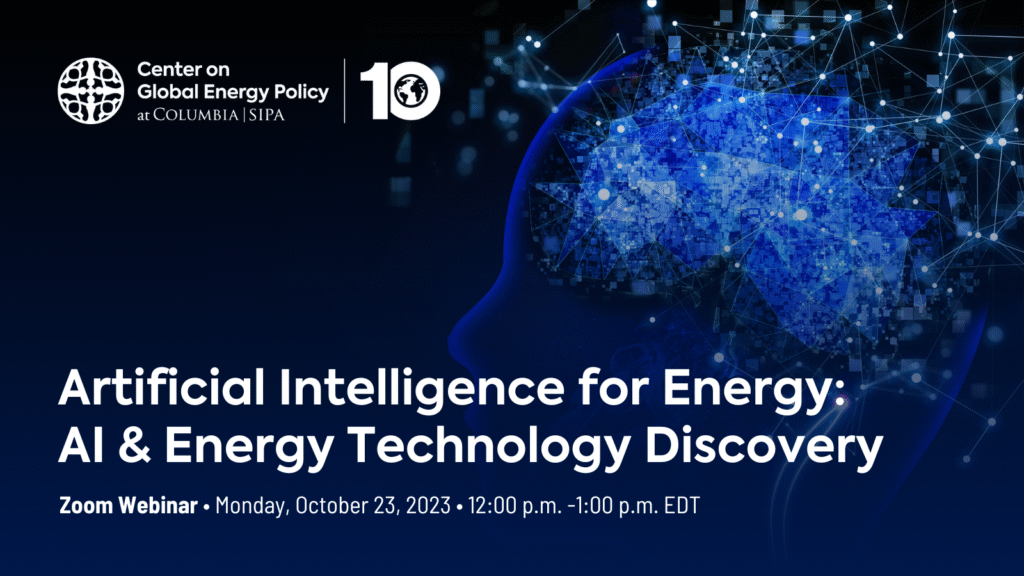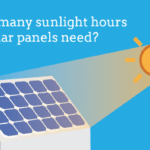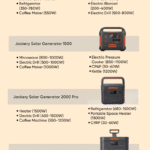Disclosure: This post contains affiliate links and I will be compensated if you make a purchase after clicking through my links. Learn More
The primary function of every generator on Earth is to convert mechanical energy into electrical energy. Generators provide a reliable power source for various applications.
Generators play a crucial role in modern society. They ensure a continuous power supply during outages and support remote operations. Industries, hospitals, and households depend on them for uninterrupted electricity. Portable generators are handy for outdoor activities and emergency situations.
They come in different sizes and capacities, tailored to specific needs. From small, portable units to large industrial machines, generators serve diverse purposes. Their efficiency and reliability make them indispensable. Investing in a quality generator ensures peace of mind and operational continuity. Understanding their function helps in choosing the right generator for your needs.
Introduction To Generators
Generators are devices that convert mechanical energy into electrical energy. They play a crucial role in powering homes, businesses, and industries. This blog post will explore their functions and importance.
Historical Background
The history of generators dates back to the early 19th century. The first electromagnetic generator was developed by Michael Faraday in 1831. Faraday’s invention laid the foundation for modern electrical engineering. His work showed that moving a conductor through a magnetic field induces an electric current.
Later, other inventors like Nikola Tesla and Thomas Edison advanced the technology. Tesla developed the alternating current (AC) generator, which is widely used today. Edison’s contributions led to the commercial use of direct current (DC) generators.
Modern-day Importance
Generators are essential in today’s world. They provide backup power during outages and are vital in remote areas without access to the grid. Hospitals, data centers, and emergency services rely on generators for uninterrupted power.
Industrial applications also use generators to ensure continuous production. Construction sites, mining operations, and oil rigs often use portable generators. They help maintain productivity and safety.
Renewable energy sources, like wind and solar, use generators to convert natural energy into electricity. These generators are key in reducing carbon footprints and promoting sustainability.
Key Functions Of Generators
| Function | Description |
|---|---|
| Power Generation | Converts mechanical energy into electrical energy. |
| Backup Power | Provides electricity during power outages. |
| Industrial Use | Ensures continuous production and safety in industries. |
| Renewable Energy | Converts natural energy into electricity. |
Basic Principles Of Generators
Generators are essential devices that convert mechanical energy into electrical energy. They work on simple but powerful principles that have revolutionized our world. Understanding these principles helps us appreciate the technology that powers our homes, schools, and businesses.
Electromagnetic Induction
Electromagnetic induction is the core principle behind generators. This phenomenon occurs when a conductor, such as a coil of wire, moves through a magnetic field. The movement induces an electric current within the conductor.
Imagine a magnet and a coil of wire. When the magnet moves near the coil, it creates a flow of electricity. This is because the moving magnetic field cuts through the coil, inducing a current.
The famous scientist Michael Faraday discovered this principle in 1831. His discovery laid the foundation for modern electrical engineering.
Energy Conversion
Another key principle of generators is energy conversion. Generators convert mechanical energy into electrical energy. This process involves several steps, often facilitated by various components within the generator.
Here’s a simple breakdown of energy conversion in generators:
- The generator uses a prime mover to create mechanical energy. This could be a diesel engine, steam turbine, or wind turbine.
- The mechanical energy rotates the generator’s rotor.
- The rotor’s rotation in the magnetic field induces electrical energy in the stator windings.
In essence, the generator takes motion from a mechanical source and transforms it into usable electricity. This process powers everything from small gadgets to entire cities.
Generators are indispensable in today’s world. They ensure we have electricity even in remote locations or during power outages.
Types Of Generators
Generators are essential devices that convert mechanical energy into electrical energy. There are two main types of generators. These are AC generators and DC generators. Each type has its own unique function and application.
Ac Generators
AC generators produce alternating current (AC). This type of current changes direction periodically. AC generators are commonly used in homes and businesses. They provide power for appliances, lights, and other devices. The most common type of AC generator is the alternator. It works by rotating a coil in a magnetic field. This creates an alternating current.
- Used in power plants
- Common in industrial applications
- Essential for household electricity
Dc Generators
DC generators produce direct current (DC). This type of current flows in one direction. DC generators are used in applications where stable current is needed. Examples include battery charging and small electronic devices. A common type of DC generator is the dynamo. It works by using a commutator to produce direct current.
- Used in battery charging
- Common in automotive applications
- Essential for small electronic devices
| Type of Generator | Current Produced | Common Uses |
|---|---|---|
| AC Generator | Alternating Current (AC) | Homes, Businesses, Power Plants |
| DC Generator | Direct Current (DC) | Battery Charging, Electronics, Automotive |
Components Of A Generator
Generators are complex machines made up of several key components. Understanding these components helps in grasping how generators produce electricity. Let’s dive into the main parts of a generator and their functions.
Rotor And Stator
The rotor is the rotating part of the generator. It creates a moving magnetic field. The stator is the stationary part. It contains coils of wire. The rotor spins inside the stator. This movement induces electrical current in the stator coils.
You May Like: How to Test a Generator Stator With a Multimeter
| Component | Function |
|---|---|
| Rotor | Creates a moving magnetic field |
| Stator | Contains coils of wire that generate electricity |
Voltage Regulator
The voltage regulator controls the output voltage of the generator. It ensures the voltage remains constant. This is crucial for protecting electrical devices from damage.
- Controls the output voltage
- Maintains constant voltage levels
- Protects electrical devices
Without a voltage regulator, electrical devices could overheat or malfunction. This makes it a vital component in any generator.
Applications Of Generators
Generators are crucial in our daily lives. They provide power during outages and serve various industries. Their applications are vast and diverse. Let’s explore some of these applications.
Industrial Use
Generators play a vital role in the industrial sector. Factories and plants use generators to maintain continuous production. They prevent costly downtime during power outages.
Some common industrial applications include:
- Powering machinery and equipment
- Maintaining critical systems in hospitals
- Supporting construction sites
Industrial generators are designed to handle heavy loads. They ensure that operations run smoothly without interruptions. These generators are robust and reliable.
Residential Use
Generators are also essential for residential purposes. They keep homes powered during blackouts. Homeowners use them to maintain comfort and safety.
Here are some common residential applications:
- Powering essential appliances like refrigerators and heaters
- Ensuring the functionality of security systems
- Providing lighting during emergencies
Residential generators come in various sizes. They are easy to use and maintain. These generators provide peace of mind for homeowners.
Environmental Impact
Generators play a key role in powering our world. Yet, their use has significant environmental effects. Understanding these impacts is crucial for a sustainable future.
Carbon Footprint
The carbon footprint of generators is a major concern. Fossil fuel-powered generators emit carbon dioxide (CO2), a greenhouse gas. This gas contributes to global warming.
Here are some key points about their carbon footprint:
- Diesel generators emit large amounts of CO2.
- Gasoline generators also produce significant CO2 emissions.
- Natural gas generators are cleaner but still emit CO2.
Reducing the carbon footprint of generators is critical. Cleaner energy sources can help achieve this goal.
Sustainable Alternatives
There are sustainable alternatives to traditional generators. These options produce less CO2. They are better for the environment.
Some sustainable alternatives include:
- Solar Generators: Use sunlight to generate electricity.
- Wind Turbines: Harness wind energy for power.
- Hydroelectric Generators: Use water flow to produce energy.
These alternatives offer many benefits:
| Alternative | Benefits |
|---|---|
| Solar Generators | Zero emissions, renewable energy |
| Wind Turbines | Low emissions, renewable source |
| Hydroelectric Generators | Consistent power, renewable source |
Switching to these alternatives can reduce our environmental impact. They provide cleaner, more sustainable energy solutions.
Innovations In Generator Technology
Generators have evolved rapidly over the years. They are now more efficient and versatile. New technologies are making them more eco-friendly. Let’s explore some exciting advancements.
Renewable Energy Generators
Traditional generators use fossil fuels, which harm the environment. Renewable energy generators are changing this. These generators use solar, wind, and water power.
Solar generators use sunlight to create electricity. They are silent and require low maintenance. Wind generators harness the power of the wind. They are especially useful in windy areas. Water or hydro generators use flowing water to generate power. These are common in areas near rivers or dams.
Renewable energy generators are sustainable. They reduce our carbon footprint and help fight climate change.
Smart Grid Integration
The smart grid is a modern electricity network. It uses digital technology to manage electricity efficiently. Smart grid integration with generators is an exciting development.
Generators connected to the smart grid can communicate with the network. This allows for better energy management. It helps prevent blackouts and reduces energy waste. Smart grids can also distribute power from renewable sources effectively.
Integrating generators into the smart grid makes the entire system smarter. It ensures a more stable and reliable power supply.
| Generator Type | Energy Source | Advantages |
|---|---|---|
| Solar Generator | Sunlight | Silent, Low Maintenance |
| Wind Generator | Wind | Effective in Windy Areas |
| Hydro Generator | Water | Common Near Rivers |
These innovations are making generators more efficient and eco-friendly. They help in creating a sustainable future for our planet.

Credit: insideclimatenews.org
Future Of Generators
The future of generators is bright and full of promise. Generators are evolving with new technologies. They are becoming more efficient and eco-friendly. Let’s explore the emerging trends and challenges ahead for generators.
Emerging Trends
New trends in generators are exciting and innovative. Here are some key trends:
- Renewable Energy Integration: Generators are now using solar and wind power.
- Smart Generators: These generators can be controlled using smartphones.
- Energy Storage Solutions: Batteries store energy for later use.
These trends make generators more reliable and green.
Challenges Ahead
Despite the exciting trends, there are challenges too. Let’s discuss some of the key challenges:
| Challenge | Details |
|---|---|
| Cost | New technologies can be expensive. |
| Infrastructure | Old systems need upgrades to work with new generators. |
| Regulations | Changing rules can affect generator use. |
These challenges need solutions for a better future.
Frequently Asked Questions
What Is A Generator’s Main Function?
A generator converts mechanical energy into electrical energy for various applications.
How Do Generators Produce Electricity?
Generators use electromagnetic induction to produce electricity, involving a rotating coil within a magnetic field.
What Types Of Generators Exist?
Generators can be portable, standby, inverter, and industrial, each serving different power needs.
Why Are Generators Important?
Generators provide essential backup power during outages, ensuring continuous operation of critical systems.
Final Thoughts
Generators play a crucial role in providing power across various sectors. They ensure electricity during outages and support critical operations. Understanding their function helps in making informed decisions about energy needs. As technology advances, generators will continue to be essential for reliable power solutions.
Stay informed and choose the right generator for your requirements.








